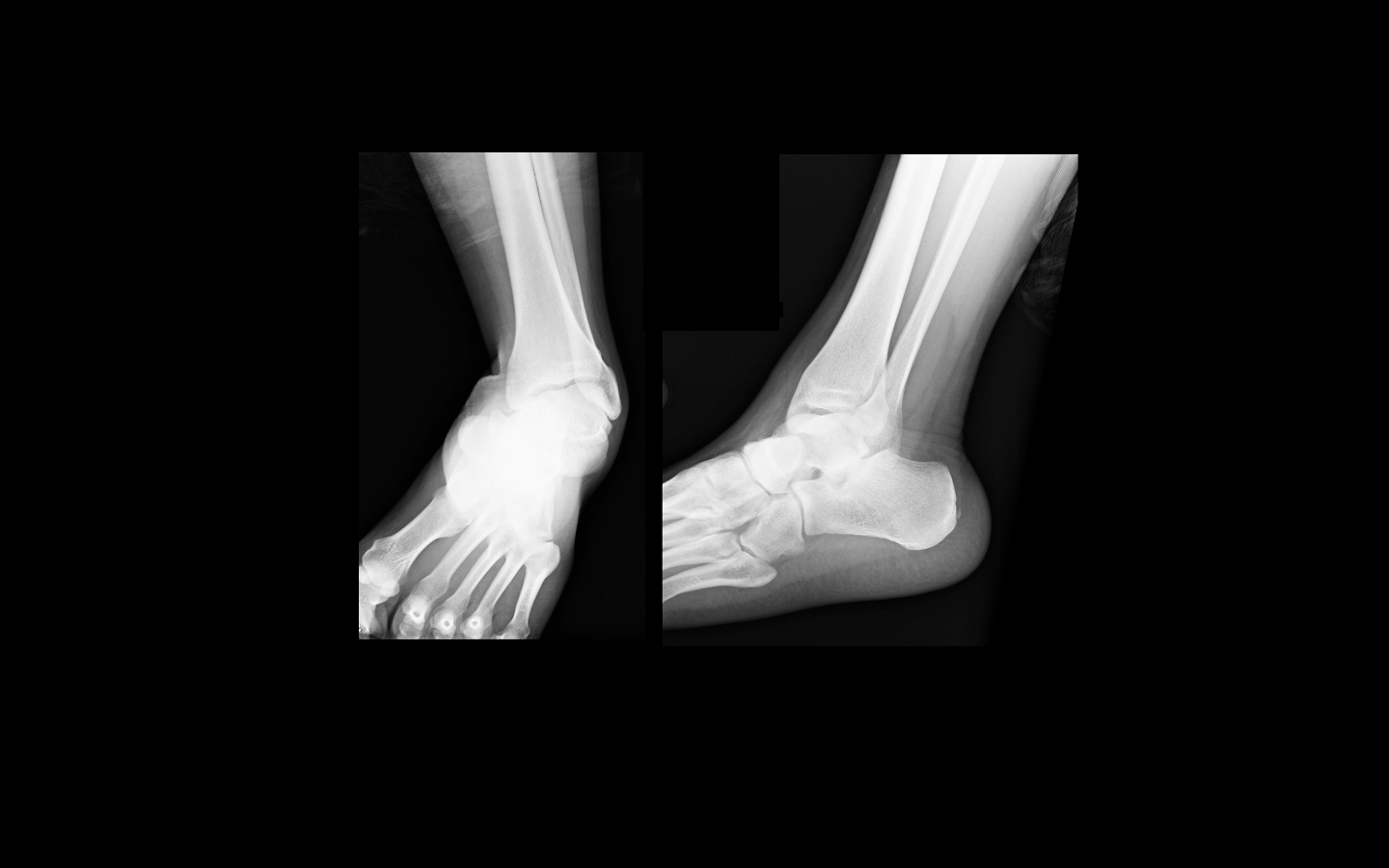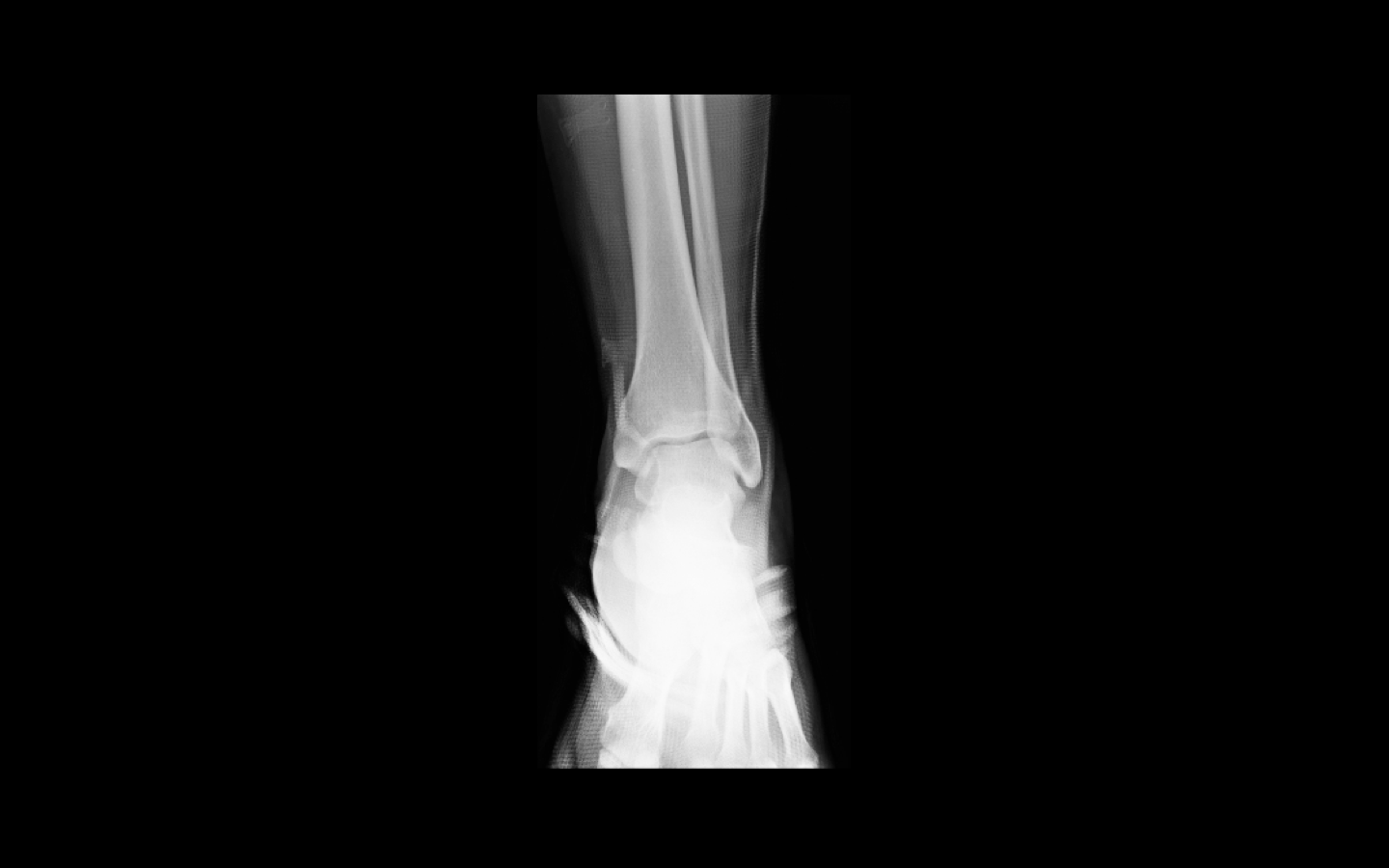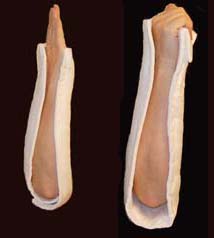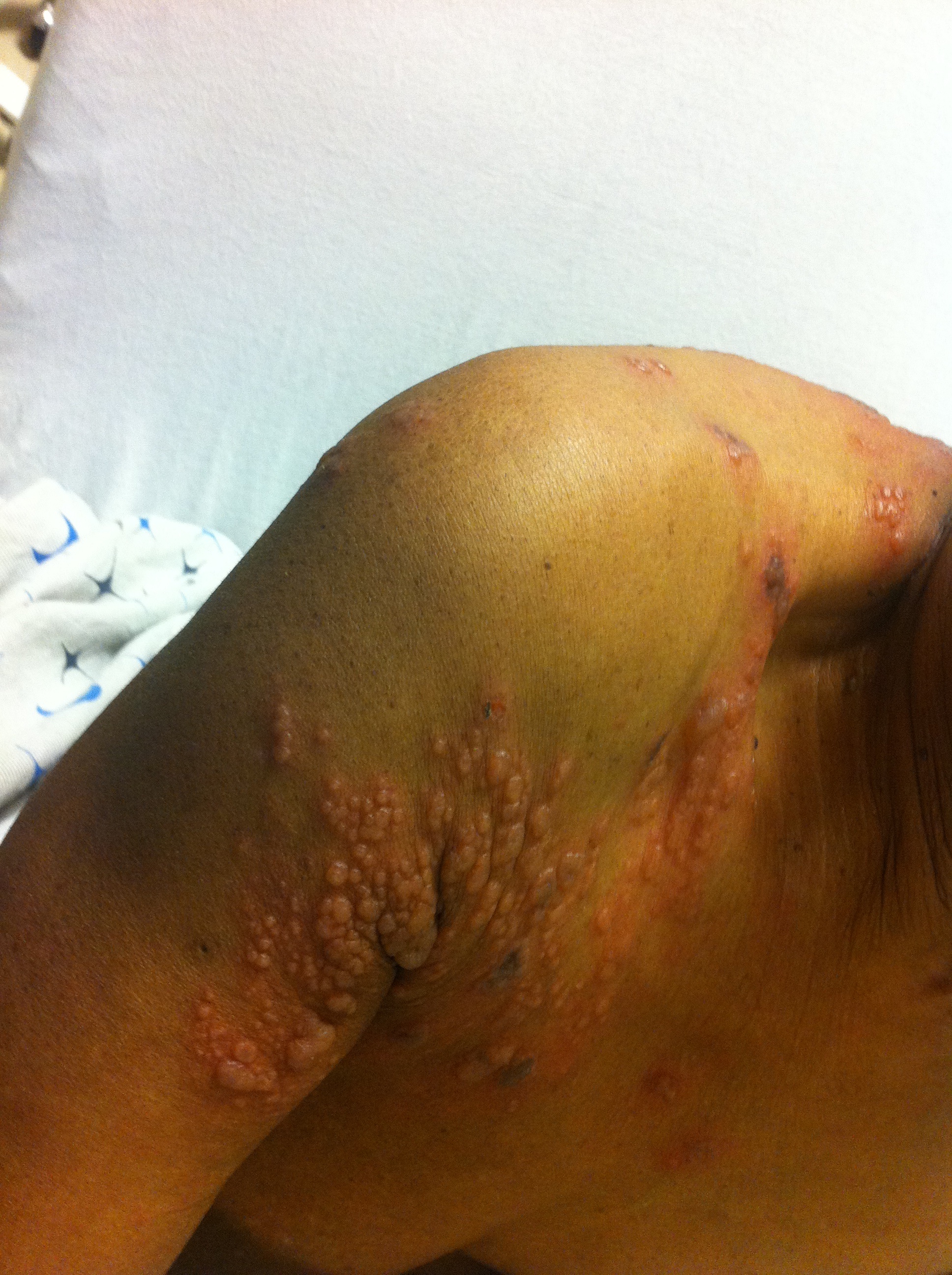Category: Toxicology
Keywords: adenosine, central line (PubMed Search)
Posted: 8/29/2011 by Bryan Hayes, PharmD
(Updated: 9/8/2011)
Click here to contact Bryan Hayes, PharmD
Every so often a patient arrives in PSVT with their only intravenous access being through a hemodialysis port.
Initial dose of adenosine should be reduced to 3 mg if administered through a central line. Remember a central line delivers the adenosine right where you need it. This recommendation is supported by the 2010 ACLS guidelines. Second and third doses should be 6 mg (instead of 12 mg).
Cases of prolonged bradycardia and severe side effects have been reported after full-dose adenosine through a central line. Other situations to consider lower doses include patients currently receiving carbamazepine or dipyridamole or in those with a transplanted heart.
McIntosh-Yellin NL, et al. Safety and efficacy of central intravenous bolus administration of adenosine for termination of supraventricular tachycardia. J Am Coll Cardiol 1993;22:741–5.
Chang M, et al. Adenosine dose should be less when administered through a central line. J Emerg Med 2002;22(2):195-8.
Neumar RW, et al. Part 8: Adult Advanced Cardiovascular Life Support: 2010 American Heart Association Guidelines for Cardiopulmonary Resuscitation and Emergency Cardiovascular Care. Circulation 2010;122:S729-S767.
Category: Neurology
Keywords: encephalitis, meningitis, acyclovir, headache, fever (PubMed Search)
Posted: 9/7/2011 by Aisha Liferidge, MD
Click here to contact Aisha Liferidge, MD
Category: Critical Care
Posted: 9/6/2011 by Mike Winters, MBA, MD
(Updated: 12/15/2025)
Click here to contact Mike Winters, MBA, MD
Fungal Sepsis in the Critically Ill
Lepak A, Andes D. Fungal sepsis: Optimizing antifungal therapy in the critical care setting. Crit Care Clin 2011; 27:123-147.
Category: Visual Diagnosis
Posted: 9/4/2011 by Haney Mallemat, MD
(Updated: 8/28/2014)
Click here to contact Haney Mallemat, MD
26 year old male presents s/p basketball dunk. Diagnosis?

Answer: Talar dislocation
Below, a post-reduction Xray, as well as a link to a video demonstrating a few ankle reductions (the video's background music makes all the difference): http://www.youtube.com/watch?v=AzqCsLX1K1E

Follow me on Twitter (@criticalcarenow) or Google+ (+haney mallemat)
Category: Cardiology
Keywords: atherosclerosis, coronary artery disease (PubMed Search)
Posted: 9/4/2011 by Amal Mattu, MD
(Updated: 12/15/2025)
Click here to contact Amal Mattu, MD
Approximately 7-10% of cases of ACS are not related to atherosclerotic coronary disease. Some other causes of ACS include the following:
trauma
vasculitis
congenital abnormalities
emboli (e.g. bacterial)
thoracic aortic dissection
infectious diseases
DIC, TTP
These conditions can produce ST-segment changes that resemble those of true STEMI or non-STEMI, and therefore some of these patients are diagnosed retrospectively after a negative catheterization.
Category: Orthopedics
Keywords: Sugar Tong Splint (PubMed Search)
Posted: 9/3/2011 by Michael Bond, MD
Click here to contact Michael Bond, MD
Sugar Tong Splint
The sugar tong splint is ideal for splinting fractures of the radius, ulna, or wrist. It prevents flexion and extension at the wrist, limits flexion and extension at the elbow, and prevents supination and pronation. A posterior long arm splint does not prevent supinaton and pronation, therefore, it is of limited use for radius and ulna fractures.
The traditional sugar tong can be difficult to put on a patient without an assistant as it is often hard to hold the splint in position as you begin to ace wrap it. A variation on the sugar tong, the reverse sugar tong, prevents this frustration. The splinting material is cut so that a small piece suspends the splint from the web space between the thumb and index finger. The open ends at the elbow are also easily folded under each other, preventing any bulky splint material from extending out.

The reverse sugar tong is on the left, the original sugar tong on the right.
Check out this video showing how to place a reverse sugar tong splint.
http://www.youtube.com/watch?v=r-RHdttOMf0
Category: Pharmacology & Therapeutics
Keywords: thrombin,dabigatran,partial thromboplastin,bleeding (PubMed Search)
Posted: 9/1/2011 by Ellen Lemkin, MD, PharmD
(Updated: 12/15/2025)
Click here to contact Ellen Lemkin, MD, PharmD
Rye J, Stangier J, Haertter S, et al. Dabigatran etexilate - a novel, reversible, oral direct thrombin inhibitor: Interpretation of coagulation assays and reversal of anticoagulant activity. Thrombosis and Haemostasis 2010. 103;1116-27.
Category: Neurology
Keywords: delirium (PubMed Search)
Posted: 8/31/2011 by Aisha Liferidge, MD
(Updated: 12/15/2025)
Click here to contact Aisha Liferidge, MD
Category: Critical Care
Keywords: ultrasound, tracheal intubation, esophageal intubation, critical care, airway (PubMed Search)
Posted: 8/30/2011 by Haney Mallemat, MD
Click here to contact Haney Mallemat, MD
Multiple methods of confirming endotracheal tube placement exist, however quantitative waveform capnography is the most reliable method. Unfortunately this may not be immediately available at all medical centers.
Recent studies demonstrate that bedside ultrasound may assist in the detection of proper endotracheal tube placement.
The T.R.U.E. (Tracheal Rapid Ultrasound Exam) was demonstrated to be 99% sensitive, 94% specific, 99% PPV, and 94% NPV during intubation.
The basic exam involves placing a high-frequency linear-array probe on the anterior neck above the sternal notch and identifying the trachea and esophagus during intubation.
The following video is an example of what you DO NOT want to see during an intubation: http://www.youtube.com/watch?v=LvfThxhQ93A
Chou, H. et al. Tracheal rapid ultrasound exam (T.R.U.E.) for confirming endotracheal tube placement during emergency intubation. Resuscitation. Jun 2011
Werner SL,et al. Pilot study to evaluate the accuracy of ultrasonography in confirming endotracheal tube placement. Ann Emerg Med 2007;49:75–80.
Follow me on Twitter (@criticalcarenow) or Google+ (+haney mallemat)
Category: Visual Diagnosis
Posted: 8/29/2011 by Rob Rogers, MD
(Updated: 12/15/2025)
Click here to contact Rob Rogers, MD
Patient presents with right-sided chest and shoulder pain....
What's the diagnosis?

Herpes Zoster
Category: Cardiology
Keywords: therapeutic hypothermia, induced hypothermia, cardiac arrest, post arrest care (PubMed Search)
Posted: 8/28/2011 by Amal Mattu, MD
(Updated: 12/15/2025)
Click here to contact Amal Mattu, MD
If you're like me, you've been a bit confused about what exactly defines "coma" in the current recommendations for post-arrest hypothermia in "comatose" patients with return of spontaneous circulation. Fortunately, a recent NEJM article has helped clarify this by suggesting that hypothermia should be induced in these post-arrest patients with either:
Naturally, if the patient was comatose before the arrest, don't bother.
Holzer M. Targeted temperature management for comatose survivors of cardiac arrest. N Engl J Med 2010;363:1256-1264.
Category: Orthopedics
Keywords: knee dislocation (PubMed Search)
Posted: 8/27/2011 by Brian Corwell, MD
Click here to contact Brian Corwell, MD
Stability from 4 major ligaments (ACL, PCL, MCL and LCL)
Knee dislocation causes injury to multiple ligaments (usually 3 of the above).
Many of these dislocation spontaneously reduce prior to medical evaluation. Therefore, consider knee dislocation in a patient with multi ligament injury, significant hemarthrosis and bruising.
Vascular injury in up to 40% (popliteal artery)
Nerve injury in up to 23% (peroneal nerve) ((ankle dorsiflexion and sensation to the first web space of the foot))
After reduction, immobilize knee in 15-20 degrees flexion.
The degree of initial deformity, presence of strong pulses, or warm skin cannot be used to rule out popliteal injury.
Category: Pediatrics
Keywords: severe asthma, decreased hospitalization (PubMed Search)
Posted: 8/26/2011 by Mimi Lu, MD
Click here to contact Mimi Lu, MD
Category: Toxicology
Keywords: propofol (PubMed Search)
Posted: 8/25/2011 by Fermin Barrueto
(Updated: 12/15/2025)
Click here to contact Fermin Barrueto
End Tidal CO2 continuous capnography is being utilized more in the ED for procedural sedation. One of the best studies is a randomized control trial using propofol that showed you could see signs of hypoventiliation prior to hypoxia by about 60 seconds - which can be plenty of time to get your BVM and airway cart ready.
Deitch K, Miner J, Chudnofsky CR, Dominici P, Latta D.
Ann Emerg Med. 2010 Mar;55(3):258-64. Epub 2009 Sep 24.
Category: Neurology
Keywords: ROSIER scale, ischemic stroke (PubMed Search)
Posted: 8/24/2011 by Aisha Liferidge, MD
(Updated: 12/15/2025)
Click here to contact Aisha Liferidge, MD
Category: Critical Care
Posted: 8/23/2011 by Mike Winters, MBA, MD
Click here to contact Mike Winters, MBA, MD
Re-expansion Pulmonary Edema After Chest Tube Placement
Hsu KF, et al. Re-expansion pulmonary edema after insertion of chest tube for pneumothorax. J Trauma 2011;70(3):761.
Category: Visual Diagnosis
Posted: 8/22/2011 by Haney Mallemat, MD
Click here to contact Haney Mallemat, MD
79 y.o. male lung cancer patient with tachypnea, tachycardia, and normal blood pressure. Click here: http://vimeo.com/27973006
Possible diagnosis?
Answer: Right ventricular (RV) dysfunction secondary to submassive pulmonary embolism (PE).
Ultrasound for suspected PE
Consider bedside echo with PE and elevated troponin or BNP.
Recall the classes of PE:
Ultrasound “clues” of submassive / massive PE:
Lodato JA, Parker Ward RP, Lang RM. Echocardiographic Predictors of Pulmonary Embolism in Patients Referred for Helical CT. Echocardiography 2008;25:584-590.
McConnell MV, Solomon SD, Rayan ME, et. al. Regional Right Ventricular Dysfunction Detected by Echocardiography in Acute Pulmonary Embolism. Am J Cardiol. 1996; 78: 469-473.
ACEP. Critical Issues in the Evaluation and Management of Adult Patients Presenting to the Emergency Department With Suspected Pulmonary Embolism. http://www.acep.org/content.aspx?id=30060. [July 24, 2011].
John Griffiths. Respiratory: Management of small, submassive and massive pulmonary embolism. http://www.frca.co.uk/article.aspx?articleid=100750. [July 24, 2011].
Follow me on Twitter (@criticalcarenow) or Google+ (+haney mallemat)
Category: Geriatrics
Keywords: acute MI, MI, myocardial infarction, geriatrics, elderly, acute coronary syndrome (PubMed Search)
Posted: 8/21/2011 by Amal Mattu, MD
Click here to contact Amal Mattu, MD
Elderly patients are high risk for missed MI because of atypical presentations. Though this seems to be relatively common knowledge, it is not always remembered. So here's a reminder....
Samaras, N, Chevalley, T, et al. “Older patients in the emergency department: a review.” Ann Emerg Med. 2010;56:261-269.
Category: Pediatrics
Keywords: weakness, constipation (PubMed Search)
Posted: 8/20/2011 by Mimi Lu, MD
Click here to contact Mimi Lu, MD
Infantile botulism
Category: Toxicology
Keywords: propofol, procedural sedation, fospropofol (PubMed Search)
Posted: 8/18/2011 by Fermin Barrueto
Click here to contact Fermin Barrueto
If you think the controversy was just heating up for propofol use in the Emergency Department, just wait until the new agent begins arriving to an ED near you - fospropofol. A new water soluble version of propofol, this agent will remove the problems of pain at the injection site, an easier/wider therapeutic window for sedation and allowing of long-term sedation without the heavy lipid load.
Currently, there is limited FDA approval in the US for monitored anesthesia care. I am waiting for the first paper showing its use in the ED for procedural sedation. Safety data is still growing.
Mini-pearl: Patients allergic to soybean should either avoid propofol or undergo skin testing since the emulsion is made of soybean oil and egg lecithin. There have been reported cases of anaphylaxis after administration of propofol in patients with food allergies, peanut and birch.
Fospropofol: a new sedative-hypnotic agent for monitored anesthesia care.
Moore GD, Walker AM, MacLaren R.
Ann Pharmacother. 2009 Nov;43(11):1802-8. Epub 2009 Oct 13. Review.
Possible anaphylaxis after propofol in a child with food allergy.
Hofer KN, McCarthy MW, Buck ML, Hendrick AE.
Ann Pharmacother. 2003 Mar;37(3):398-401.
